Mark Gies & Dustin Haddock - Best Practices for Codes and Standards Involvement - PODCAST TRANSCRIPTION
July 10, 2023 at 7:00 a.m.Editor's note: The following is the transcript of a live interview with Mark Gies and Dustin Haddock of S-5! You can read the interview below or listen to the podcast.
Intro/Outro: Welcome to Roofing Road Trips with Heidi. Explore the roofing industry through the eyes of a long-term professional within the trade. Listen for insights, interviews, and exciting news in the roofing industry today.
Heidi J. Ellsworth: Welcome to another Roofing Road, trips from RoofersCoffeeShop. This is Heidi Ellsworth, and today we're going to talk about something that everybody wants to know about and that's codes and standards. I know you may not think it's super exciting, but it's very important and the gentlemen who are here today as our guests will make it exciting. So I want to welcome Mark Gies and Dustin Haddock with S-5! to Roofing Road Trips. Welcome gentlemen.
Dustin Haddock: Hi everybody. Thanks for joining.
Heidi J. Ellsworth: You guys make everything fun. Whenever we're going to the shows or whatever you're doing, your open houses, everything is always great so I'm looking forward to this conversation today to learn a lot more about what's happening on the building code front. But before we get started, let's start with some introductions. So Mark, can you start us out and just introduce yourself and tell us a little bit about what you do at S-5!.
Mark Gies: Sure, Heidi. So Mark Gies, I'm director of product management at S-5!, which is on the product side, but mixing up market and the customer side of things so I'm doing a lot of things. I've been here for four years now, going on four years, which it's been going fast. I've been in the solar industry for more than 14 years, and most of that has actually been involved with codes and standards and on the structural side of things. So it's very interesting to me, not very to other people.
Heidi J. Ellsworth: But it's so important, and it is interesting when you talk to people who get it because they make it interesting so Mark, thank you for being here today.
Mark Gies: I hope so.
Heidi J. Ellsworth: Yeah, and Dustin, if you could introduce yourself and then also tell us obviously what you do at S-5!, but if you could also tell us a little bit about S-5! and its history, that would be great.
Dustin Haddock: I'm Dustin Haddock, current title is vice president of research and development. Family owned company, my dad invented the technology in the early nineties and at that point I was just a kid and so it's hard saying how long I've worked at S-5! because I was one of the first bonafide packaging experts packaging products out there in the garage and shipping them out when I was a kid. Then I went to school, got back from school, finished out my rodeo career then came back and at that point I think we were an army of four individuals. And I started, believe it or not in marketing because my bachelor's degree was communication science, and that's where I started. But there was a hole when we were answering the tech lines on answering some of these questions that building officials want answered and first it's what's your UL listing?
And a lot of people correlate UL 90 and UL 60 and UL 30 or whatever to wind speed, which is not wind speed. So we were getting those questions and I worked pretty diligently and you figure out, okay, we don't have an answer for these questions right now, so how do we do that? And that's more or less what got me involved in R&D and jumping on all the different committees and the standard associations and working with the NRTLs so that we could come up with something that was viable that would help building officials, end users, engineers make our product more user-friendly in a language that everybody speaks. And so it's one thing talking to an engineer, he gets it when you show him pull out data and stuff like that, a little bit different when you're talking to a building official that wants to see how everything works as a system.
And there was definitely a hole there and for some reason, I don't know why, but it interested me and so that's how I got kind of mostly involved with testings and code and standard and stuff. The history of S-5! is my dad, he runs Seven States Steel, which was the largest steel erection company in seven states. Seven States Steel up in the northeast and he constructed a lot of buildings. It was fun driving around as a kid out there because he'd say, I built that building and I built that building and I built that building.
Heidi J. Ellsworth: Yeah, I had that too. I love that.
Dustin Haddock: Right? And when he decided at some point that people were willing to pay him for his advice on construction, and so he started his consulting the Metal Roof Advisory Group and the business wasn't rolling in for the consultants at that point so he had some downtime. And one of the problems with the metal roof is how to put things on that roof without jeopardizing the integrity. He constructed a lot of metal roofs, that was primarily all he did was metal roofs, metal construction, and it was the trades come later and they put things on the roof and jeopardize the integrity of the roof, make it leak, damage the roof warrantings and stuff. So he gave it a lot of thought and it actually came to him in a dream, the very first S-5! clamp, and he woke up and got out the table saw, believe it or not, and made the first S-5! clamp out of a wood block and started tinkering with it and felt like, oh, I really got something here.
The big story there was snow retention because one of the biggest callbacks you would get is people gluing stuff onto a metal roof or even screwing through the roof into the structure, whether it'd be leaks, there's always a callback thing. You weren't ever really done with the project, you were going to be back there every couple years replacing the snow retention. And had something similar happen at our house when I was a kid growing up, I was probably the only kid in million that grew up in a metal building. Our house was a metal building, and so snow came crashing off right after he shoveled it and that also spurred along I've got something here and he just went with it. I mean it was interesting because once he proved the prototypes and the strength of the prototypes and not making any holes in the roof and just grabbing a hold of the roof scene, he figured everybody would be very excited about it.
On the contrary it was a new, it was niche there and the idea was is he would invent it and sell the company and make a royalty and continue with his consulting. But what ended up happening was people just didn't understand the nifty-ness of it so he put together a team and built the industry for attaching things to metal roofs. And well it's interesting because a lot of the companies that he offered to sell the company way back when in the early nineties have now come back to him and he just laughs them off.
Heidi J. Ellsworth: No, we're good now. I can relate to a lot of that. I grew up under a metal roof also. My dad was in construction, but it wasn't a steel building, it was wood, but we had the metal roof. And I think what I love too is... First of all, I love that story. I can never hear it enough, but as you kind of look at that what S-5! has grown into is being the experts. The experts on attachment on metal roofs and also the codes. And so Mark, I'm going to send this back over your direction for a minute. What are you seeing right now that is not being covered by building codes like snow around the roof and the retention?
Mark Gies: Thanks Heidi. Yeah, snow is a big one. I think that, and maybe Dustin can get into this deeper on the snow side, but there are parts of codes and then I would say also standards which are testing methods that everybody believes in, standardized testing methods that you accept. Some areas just there are gaps in that area, and one of the big ones is snow, when you get snow on a roof, how do you keep it up on the roof so it doesn't kill people? How strong does that need to be? So there's a lot of uncertainty there. Another gap that I see is the attachment itself, that interface. So there's a lot of code and standards around mounting systems for solar or for HVAC, but when you get down to the actual interface of the roof with the attachment and have to make sure that it's waterproof and strong enough, doesn't damage roof, there's all the standards kind of skirt that and they end right before that.
So that ends up has been kind of a big gap. There are things being done to address it now. There are standards being created. One of them is an offshoot of a UL Standard 2703A they call it, which is focusing on that interface, but the specific interface itself has always been a gap where nobody really wants to talk about it on [inaudible 00:09:50]. And that's overall all roofs and then specifically metal roofs are sort of victim of that.
Dustin Haddock: It more or less started with snow retention. I mean the invention of the S-5! clamp was the market space that was the big market space was snow. But basically it was a specialty fastener that will let you put anything you want on a metal roof without putting holes in it on a standing seam metal roof. And snow is always considered as an act of God, right? If the gutters get ripped off or the snow retention that was up there fails or whatever, it's like an act of God or that's how it was classified. But it takes putting some science to it. The roof has to be engineered for the design snow loads so the building doesn't collapse, correct? And so you have snow loads that you're working with to which you then can engineer a system that will be designed for that specific structure and last as long as that structure.
Where the code has these huge gaps is they haven't really looked at snow retention devices. They've looked at design snow loads, they've looked at drift loads, they've looked at everything. I mean, the way I look at it is the code is a minimum. It's a minimum for personal safety, keeping people safe. A building collapsing is pretty important. Snow shedding off the roof although can be fatal and has been fatal, it's not something that is going to make huge headlines and people really step back and look at it and say, "We need to do something here." And that's kind of to some degree what Mark was alluding to is where standards step in. So everybody asked me, what does UL do? And it's not just UL, there's a lot of NRTLs, TUB, CSA, Intertek. And I said, well, basically they create test methods to test products that are out in the industry that we can safely say that we're pretty sure it won't kill anybody.
Mark Gies: Or it meets that code, it meets the code rule. It'll say, this is the wind force that we calculate is on the roof, the highest wind force on this roof. So then you say, well how strong does this thing need to be so it doesn't pull off the roof? And then that's where the test standards come in to say, we tested with this method and since we're a good agency and our test method is approved by consensus, which is the way to go, not just one person, it's with a team of people. Then you say, okay, if you give me those numbers, I got to believe those numbers that you're telling me and that's how it kind of works together codes and standards.
Heidi J. Ellsworth: Right. We know what is not being covered and you actually kind of started answering my next question, but what should be covered? And so you're talking about it and so Dustin continue on that track. You were kind of talking about what they should be actually covering between the codes and then the standards to fit those codes.
Dustin Haddock: I mean, when you get into life safety events, that's when the code has to step in and make the minimum requirements and you see it kind of go both ways. The code sometimes will mandate something and there's no test method or standard. And so the NRLTs will get together and they'll bring a group of people, manufacturers, AHJs, interested bodies together, and we all kind of come together and we cuss and discuss it and figure out the best way to test in order to meet the code requirements. What's better is when a standard already exists and the code adopts that standard because then you're not playing catch up. There was a big debacle several years ago when the code made some statements about solar panels having the same fire rating as the roof itself.
And for a while you couldn't put solar on a roof because there was no test method to qualify that so nobody could be within the restraints of the code. And so I argue sometimes with some of the NRTLs about what should be driving standard, but that's one of those things. And our big spaces really are solar panels, putting solar on a roof and snow retention, and we've come a long way in the thaw industry. I love to say it's the oldest new industry that exists, right? Would it take, you'll have to correct me if I'm wrong mark, but I think the very first glimpse of solar being anywhere within the code was is that the 2012?
Mark Gies: ASCE 7-16 was the first time solar panels were sectioned in ASCE 7. It was ASCE 7-16, 2016 version, which is still being adopted actually, but that's really the first mention of solar in the code specifically. Instead of using it as before it was cladding or a sign they were trying to use it in the definition of putting a sign up on a roof, they were trying to use that to then develop how strong a solar panel needs to be prior to that.
Heidi J. Ellsworth: That's pretty different.
Mark Gies: Right. Back in those days like 2012, that's when SEAOC, which is the Structural Engineering Association of California, had a committee on solar and they created this white paper which I was involved with anyway, I don't know if you were Dustin, but-
Dustin Haddock: I used it a lot, but you were involved.
Mark Gies: Right. Created this white paper that there was no other thing going on so that then became everybody used that because people were hungry for something, some kind of guidance, and they issued this paper and it became really the popular document that people lived by at the time. And then that got incorporated into the codes actually.
Heidi J. Ellsworth: Wow.
Mark Gies: So that was interesting way, and that worked very well doing it that way. On the structural side with solar, another area that Dustin has been involved with a lot has been lightning protection. For lightning protection you wonder you have a metal metal roof and lightning protection and how do they coincide and what happens? And there's very little on that, right Dustin? And you've been involved in trying to create some code around that like what does it mean to make sure that nobody gets electrocuted if you have lightning protection on a roof, but it's bolted to the metal roof and what does all that mean? And is a roof grounding mechanism itself or not? And there's a lot of uncertainty around that and we've been somewhat involved in that as a company as well.
Dustin Haddock: It's the ultimate get out of jail, right? It may or may not energize.
Mark Gies: Right.
Heidi J. Ellsworth: Well, and a lot of what you're talking about is not new. I just want to say lightning's been around forever. Snow has been falling on roofs and caving them in or causing problems with retention forever. And solar, even though yes, solar arrays are relatively new in the last couple of decades, it's still. And so you are developing, you are helping to develop codes for basically nature like how are we going to deal with this on the roof? And it's kind of amazing to me that it wasn't already there.
Dustin Haddock: Right. I mean that was my big mystery. And when you're a kid first starting out in the business industry you want to answer everybody's questions and it's like, well there are no answers. As S-5! we said, well let's seek out how to make the answers, which got us heavily involved with code and standard.
Heidi J. Ellsworth: And you guys do so much. Speaking of that, Mark, I know you've been involved with the Los Angeles County codes. Let's talk a little bit about that because I think everybody thinks the big building codes, but I mean then you have all the different cities, counties, municipalities, all of that.
Mark Gies: Well, I mean this is actually more of a Dustin's game for S-5!. My prior place is when I've been more involved on the local side. There's so many different jurisdictions, Miami-Dade, LA County, LA City, San Diego, Palo Alto, there's a handful of them that come up as these are a pain in the butt to get them permitted because they take code and read it to the letter of the law or interpret it in a way that's different than other people. Or you could have two people sitting next to each other in an office and they interpret it differently and they're sitting right next to each other literally.
Dustin Haddock: The code like the Bible somewhat, everybody that's interested reads it, but their outcome is a little bit different on a lot.
Heidi J. Ellsworth: Different interpretations. Okay.
Mark Gies: So historically, and I think that's getting better and that's something I can talk about as far as trends, but historically navigating through some of these tougher jurisdictions has been like a free for all where you're just attacking this one at a time and every adventure is a different adventure. And you learn from how it goes, but then you go onto the next one, the next project is somewhere else and it's a little different. And I know with LA, Dustin can talk to more about S-5! in LA County, but it's instances where we as a company were in involved helping to working with the county closely to help improve and evolve their own codes, their specific local codes. S-5! was involved in helping to evolve those. Right, Dustin?
Dustin Haddock: Yeah. I mean the way I look at it is you have the AHJs that's the authority you have in your jurisdiction and those are the building officials and they're kind of like the policemen of the code. And when there's nowhere they can really point to in the code to help them police an installation, they're in the in hole there, right? In order to influence code, I mean it can be 10, 15 years. And so what we've done is we work very closely with AHJs, and LA County was one of the bigger ones where they had a lot of questions and were very interested to learn. It wasn't like they were anti putting solar on metal roofs, they just didn't understand and we worked with them for a long time. We brought the International Code Council in as well, created basically our standard test methods that we've been doing forever, but done it in such a way that LA County is comfortable with it and comfortable with the reports and we're able to work with them on a specific level.
I can pull a clamp on one standing seam metal roof and get 2000 pounds. Another standing seam metal roof I can pull that same clamp, but a different shape standing seam roof and get 350. So there's not a catchall, it's very specific to the roofing manufacturer and the roofing material that's used. And we helped them to understand that and to qualify that in such a way that they're able to work with S-5! projects in a more streamlined fashion, even though that code language isn't there yet. I mean one of the things about the ICC in LA County and some of the stronger jurisdictions of Miami-Dade is if the code language isn't there, they'll create their own acceptance criterias. And so it's sort of a faster way of building code so that projects can still take place. And I absolutely applaud all those building officials that are willing to participate in it instead of just redlining something. They'll get in touch with the manufacturer or they'll ask the customer to get in touch with manufacturers and say, "Hey, we want to help, but we need more information. How do we get that information?"
Heidi J. Ellsworth: You know, you don't always hear that side of the story. To hear that's really cool. One of the things we've talked about before, and that there's a lot of talk out there is also about self-policing. How as an industry are we holding ourselves accountable for the safety and the benefits of owners in general public? So maybe Dustin, I'm going to start with you again just on your thoughts about that.
Dustin Haddock: I can't really speak to others in how they self-police, but I know with S-5! and the integrity of our brand, if we have one customer that has a bad experience, that could be a huge deal. And so we work very hard to make sure that that doesn't happen, and by doing that, when we say self-policing it's testing the product in a qualified laboratory. Whether a third party testing and it's 17025 accredited laboratory, an NRTL, testing it with somebody or some agency that's familiar with testing and test methods. And then that bleeds further into getting manufacturers endorsements, recommendations, working with the roofing manufacturer and making sure they're comfortable with it, working with installers. A lot of our products have evolved and that's from us getting up on the roof with the installers. Then hey, what do you like? What don't you like? How can we make this better?
And then we make sure that everything that is made and tested is exactly the same, and that takes more certifications so that we have other bodies ISO 9000 that come in, audit our manufacturing facility. I could give you a list like Underwriters Laboratory, Intertek, TUB, the ICC, FM, ISO, these are all people that come into our manufacturing facility and make sure that the part that was tested is identical to the part that's being produced and shipped to the customer. So I mean, if the code doesn't require it, to me self-policing means you have the integrity to know what is required to offer a good that's going to experience some extreme service loads and be a life safety thing. If the code doesn't have much to say about it, then as a company it's your responsibility to do those things and police yourself and get it out there and listen to the feedback.
If a manufacturer doesn't particularly like the way the clamp's sitting on their roof, then you go back to the drawing board. If your installers say, hey, this is great, but we have this one issue with it, you go back and figure out how to make it better and serve the industry in a positive manner. I mean, the solar industry doesn't need any more black eyes, and the snow retention industry is already a giant black eye because there's so many, there's still that whole act of God thing that parts fall off the roof and they just assume that's normal.
Heidi J. Ellsworth: I love what you're talking about. Go ahead, Mark.
Mark Gies: There's two aspects, and Dustin and I were talking earlier about this is what Dustin was saying about when there are gaps or nothing, companies that do their own testing in the meantime are the ones that really that's self-policing in one way. But then my perspective on it, and I think Dustin you kind of said this accidentally, is the better self-policing is actually to take what we do and turn that into a standard so then it's not self policed. Then you have the standard that you can hang your hat on, and we've been involved in that in creating the standards. Our test methods for the clamps to the seam have been turned into an ICC testing method that's acceptable.
So self-policing takes you to the point where you're actually not self-policing anymore. We have a ISO 9000 certified manufacturing plant which is really, people audit us. So we're confident that we do it right, but we have people come and look over our shoulder and say, yeah, you're doing it. So I think another aspect of that is that when there are these codes and the standards that come in in play, that we stand up to the test and embrace that actually.
Heidi J. Ellsworth: Exactly. Third party validation.
Mark Gies: Yeah, third party validation really is self-policing, but having somebody else do it for you.
Heidi J. Ellsworth: And I want to follow up on what you're saying there too, because really what you're saying is, okay, so we are self-policing, but once we put all this time and effort into it, we're getting it into codes, we're getting into standards, and I know you all do that through being involved with associations. Whether that's the Metal Construction Association or obviously the Building Code Associations, ASTM. So Mark, maybe to start out with you just how has being involved, because even before you came to S-5! you were very involved, how has being involved with all the associations, what difference does that make?
Mark Gies: For a company I think it's a matter of you're taking responsibility for the industry you're in. So we're part of these organizations, we have relationships with all the stakeholders in these industries, and we don't just attend, we actually are leaders and have leadership roles. And in my past as well I did that as well, that's how I got to know Dustin was actually on a technical panel for UL way back when. So it's more than just belonging to the organization, we take leadership positions and it's because we want to help the industry evolve. That's really the most important driver for us is we want the industry to evolve, and we want it to be done in a way that it can grow business as well.
Because sometimes you can do things in the name of evolution that actually can inhibit the business as well. So we feel it's very important to not only be part of these organizations, whether they're MCA or MBMA, the specific inter CL on the solar side we're involved with that, but also the agencies that are doing the testing and standards be part of those because we feel that we have that responsibility to do that in my mind. And I've always felt that, and I know S-5! did, and that was one of the things that drew me to S-5! was that same sort of philosophy on that.
Heidi J. Ellsworth: Dustin, your family's so involved, you and Sean and Rob. Talk a little bit about the importance of associations in conjunction with developing new codes and standards, or at least having those conversations.
Dustin Haddock: I mean, we take a lot of pride in we're not just members of associations, we're active participants. So it's one thing to pay the dues and show up to the meeting and not do anything with the association and kind of ride the coattails of whatever the association's doing. Often we'll take a leadership position if we can, or just be actively participants within those. So we're very active with MCA, very active with MBMA, MBCEA. We do a fair bit of work with ASTM and [inaudible 00:30:21] somehow, I don't know how, would've been the chair of the mounting systems manufacturers committee now for well, six years.
Heidi J. Ellsworth: I'm not surprised.
Mark Gies: I hope you get elected.
Heidi J. Ellsworth: Yeah.
Dustin Haddock: I mean that we're in a room or on a call with as many as 60 of our competitors, but we're all working together to better the industry. And so it's essentially coming together to say this is not just going to help my business, this is going to help all of our businesses. And we recognize the importance in that and not just saying, oh, we're a member we pay our dues, but getting involved in doing so. I mean, if it wasn't for MCA's involvement and MBMA's involvement back when there was the fire debacle with solar panels, metal roofs were completely forgotten about. It was a little Johnny come lately because some of that stuff was already written before anybody knew anything about it. But we had to get very much involved and basically change the standard so that metal roofs they're not non-combustible construction, was given a fair shot at having a class A roof with a solar panel on it, right?
Heidi J. Ellsworth: Yeah.
Dustin Haddock: And there's a lot of those kind of things that happen. And Scott Kriner, rest in peace, but he was a tremendous help. And then Vince Sagan over there at MBMA, I can't say enough about the people in the industry that get it and want to stay on top of it and it's great to work with those people. You learn from the best, and so we try to surround ourselves with the best.
Heidi J. Ellsworth: I feel the exact same way. I feel so blessed to be able to just be here with you two and hear and be part of these associations, and also continue to learn because there is so much and there's so much more than we can do. And so I can't believe, this has been an amazing podcast. We went through and everything and I was going to ask you one last question about what makes S-5! stand apart, but I don't even need to because you all told it. You told the story great. S-5! is a leader, and I want to thank both of you for everything you're doing. Thank you for being on this podcast. This has just been great.
Dustin Haddock: Yeah, appreciate the opportunity. It's been a lot of fun. I mean, I like talking about where we've been and where we're going and why we're doing it.
Heidi J. Ellsworth: Yeah. So interesting. Mark, thank you.
Mark Gies: I'm a two timer too now.
Heidi J. Ellsworth: Yeah, you are. You're repeat and we're going to have you both back again.
Mark Gies: Thank you.
Heidi J. Ellsworth: We're going to keep doing this. I'm hopefully going to see, and maybe not all of you, but some of you next week at the MCA summer meeting and we'll just keep this up. Thank you so much for helping to educate everyone on the building codes, on the standards, on what you're doing. Again, just amazing so thank you so much and thank you everyone for listening. This is the kind of stuff that can change your business. This really makes the difference. So please visit the S-5! directory on both RoofersCoffeeShop and MetalCoffeeShop. That's where you're going to find all this information and some great articles other like Mark said, on past podcasts, and we're going to be doing a lot more to really help continue with this education. So one last time, Dustin, Mark, thank you so much for being on the show today.
Mark Gies: Thank you Heidi.
Dustin Haddock: Thank you.
Heidi J. Ellsworth: And thank all of you for being a part of this. Please check out all of our podcasts under the read list and watch navigation under podcasts in Roofing Road Trips, or on your favorite podcast channel. Be sure to subscribe and get those notifications so you don't miss a single episode. We'll be seeing you next time on Roofing Road Trips.
Intro/Outro: Make sure to subscribe to our channel and leave a review. Thanks for listening. This has been Roofing Road Trips with Heidi from the RoofersCoffeeShop.com.













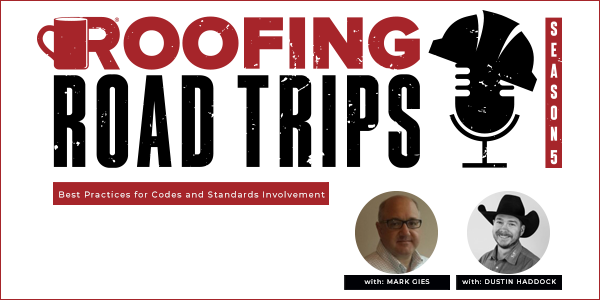
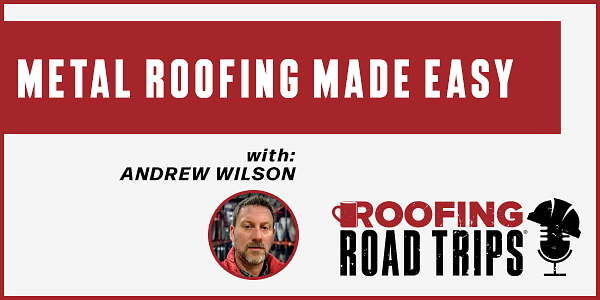
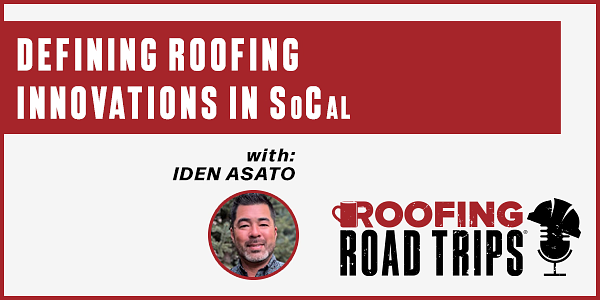
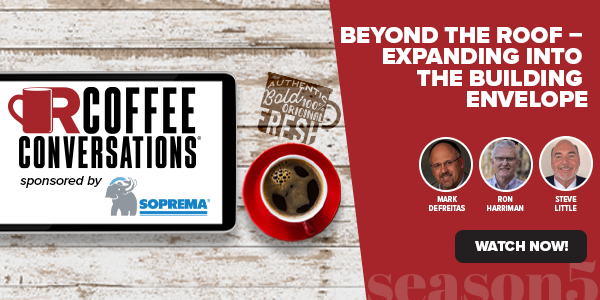


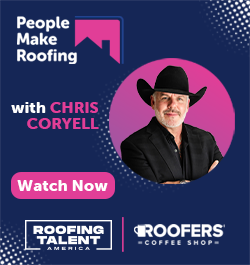

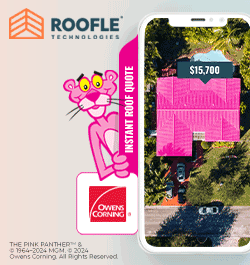
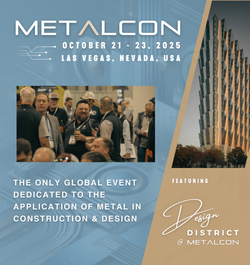
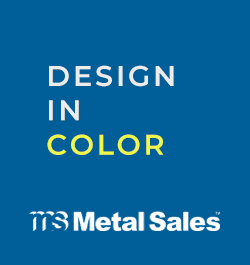
Comments
Leave a Reply
Have an account? Login to leave a comment!
Sign In